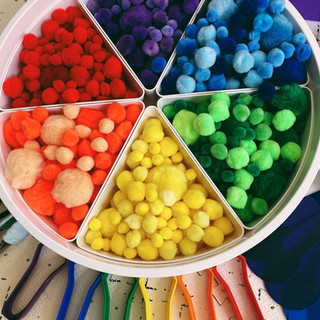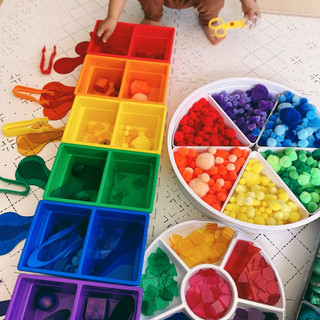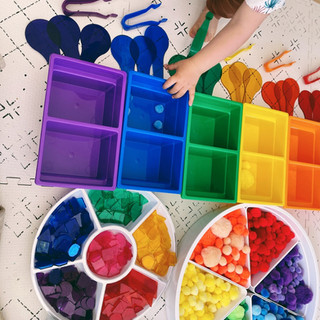Invitation to Sort Colors
- Yasmeen Kamrani Sallam

- Apr 12, 2021
- 2 min read
Children have a natural desire to make sense of their world, to create order. For that reason, 'sorting activities often attract children. In fact, many children will start sorting things without even being taught. Sorting is a beginning math skill. It may seem that a big chunk early math is about learning numbers and quantity, but there's much more to it. By sorting, children understand that things are alike and different as well as that they can belong and be organized into certain groups. Getting practice with sorting at an early age is important for numerical concepts and grouping numbers and sets when they're older. This type of thinking starts them on the path of applying logical thinking to objects, mathematical concepts and every day life in general.

While this invitation focuses on colors, through exploring all the loose parts (colored wood bits, translucent shapes, pom poms, colored paddles) it can also be a way build their recognition/language and as mentioned previously enhance their math skills. Learning shapes, numbers, letters, and colors is a skill a child will learn when they are developmentally ready. Whatever age your child is (infants-six), take a deep breath if they don't know how to say or recognize everything. Susie from Busy Toddler has a great article about the pressure we put on children knowing their colors, letters, shapes, and numbers. Invitations such as this provoke the child's thinking by building their recognition through modeling language and engaging intentionally with the child as they play.


To enhance a child's fine motor skills you can provide tongs, tweezers, or scoopers to pick up the loose parts as they transfer it from the tinker tray to the colored compartment bins #gifted. When the children use their finger muscles to squeeze or scoop the tools in order to pick up the materials and place it in bins it helps strengthen the children’s fine motor skills which in turns gets their hands ready for pencil grasp. This teaches the child to sequence a multi-step activity as well as challenge their memory by progressively increasing the demands of the activity.



















Comments